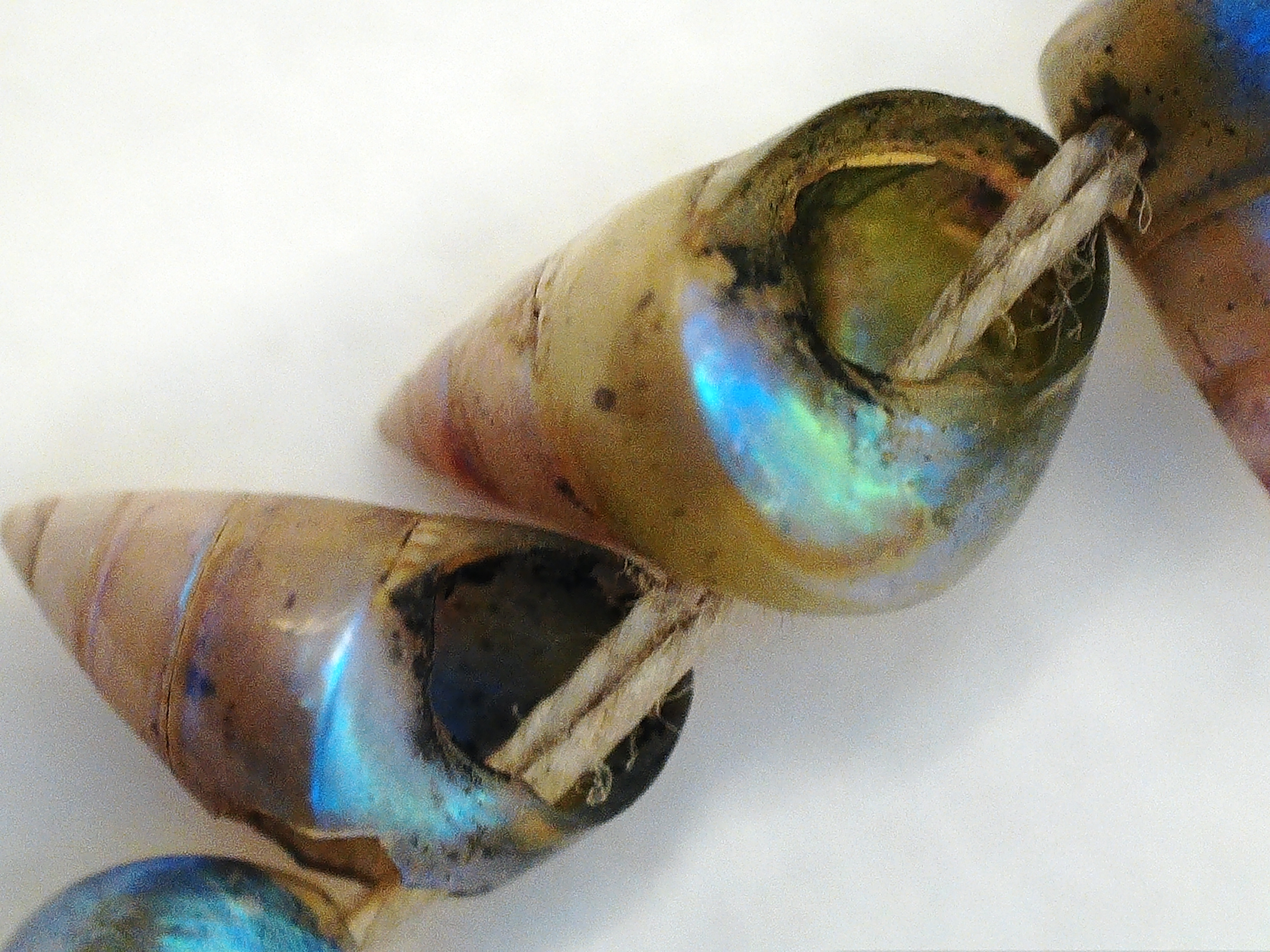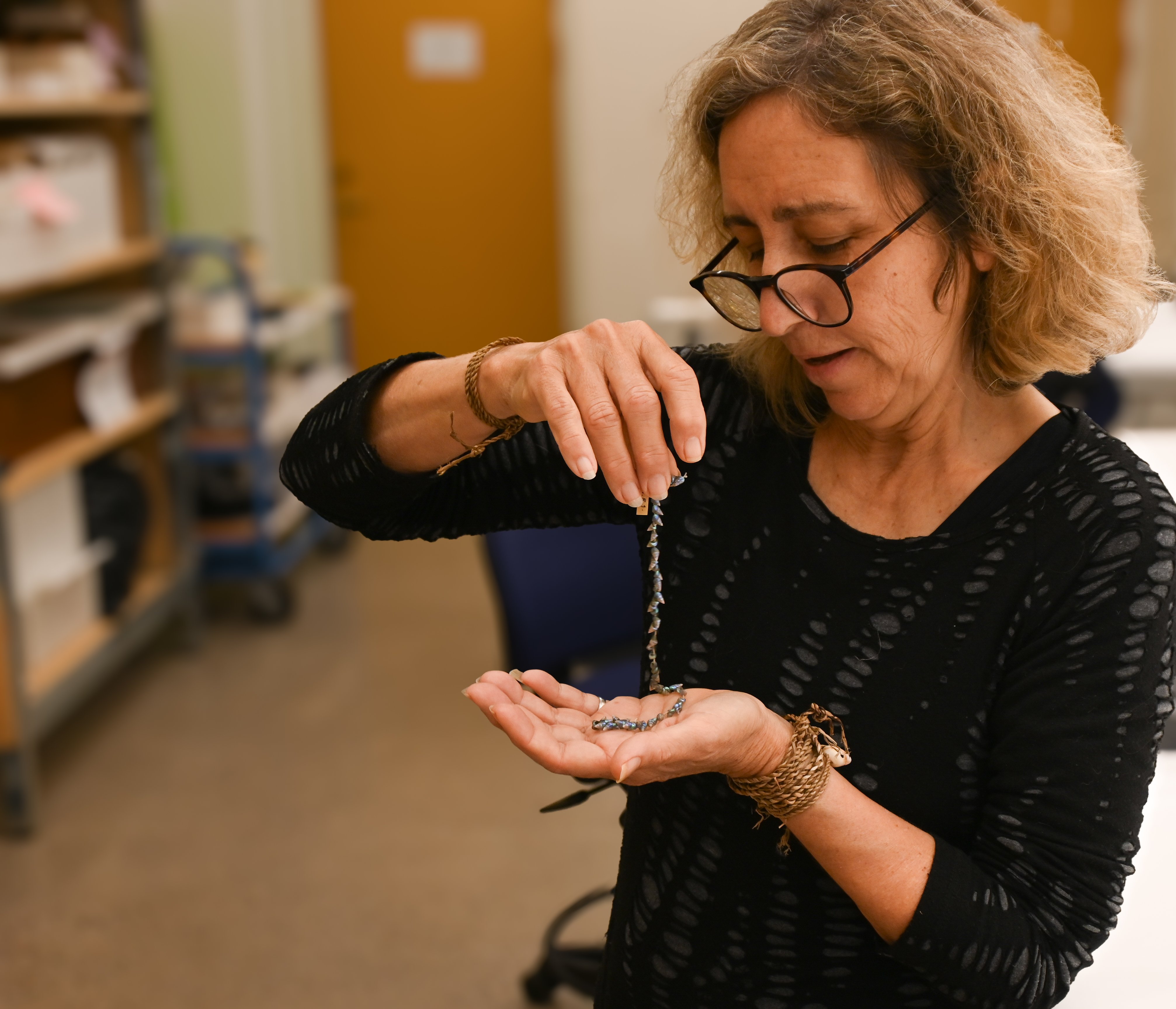
A string of Tasmanian maireener shells that has been at the Museum of Ethnograpy in Stockholm for more than 100 years. Inv.no. 1905.05.001. Photpgraph by Mandy Quadrio and Christine Hansen.
The Objects of Culture and Science project* is an artistic collaboration between Tasmanian Aboriginal artist Mandy Quadrio and curator Christine Hansen. Mandy is a proud palawa woman whose Indigenous ancestry reaches back in an unbroken maternal line for 60,000 years. Currently Christine lives in Tasmania but for almost a decade she lived in Gothenburg, Sweden, working as an academic at Gothenburg University on projects associated with ethnographic collections held in European museums.
From the late 18th century, First Nations people of Tasmania were subjected to a violent, genocidal colonisation by invading British forces. This colonial onslaught impacted significantly on palawa cultural practices, however one of the traditions that remained constant was the age-old practice of shell stringing and necklace making. The exquisite, iridescent maireener shells native to Tasmanian coastal waters used in making the necklaces are specifically the business of women. The shell necklaces continue to be a strong expression of contemporary palawa culture.

Tasmanian Aboriginal artist Mandy Quadrio visiting the Museum of Ethnograpy in Stockholm in September 2023. Photograph by Christine Hansen.
In 2019, while looking through the Swedish Museums of World Cultures’ database Carlotta, Christine noticed a Tasmanian maireener shell necklace in the collection and was curious about its provenance. How did it get there? Who was its creator? How old is it? As one of the few Tasmanian objects in the collections, it was both an anomaly and an opportunity. She approached Mandy to join her in an artistic research project to explore the necklace further.
Mandy’s own history as a descendant from a long matrilineal line of shell stringers provided a powerful lens through which to come to understand the shells. As an Indigenous visual artist, her practice focuses on themes of culture and identity where she uses cultural objects such as sea grass, fibres and kelp in her work. These objects are combined with the industrial material of steel wool that acts as a metaphor for the attempted erasure of her family, language, and Nation. This rich context offered a starting point for the project which privileges Aboriginal intellectual traditions as intangible heritage – as precious as the objects the museum holds.

Mandy Quadrio and the string of Tasmanian maireener shells at the Museum of Ethnography in Stockholm in 2023. Photograph by Christine Hansen.
Because the string of shells held by the ethnographic museum came from Tasmanian Sea Country more than 120 years ago, they are unique as environmental specimens. This rare meeting of scientific and traditional knowledges can act to open new avenues for exploration, and this is the overarching aim of the project – to reconfigure ethnographic collections as both scientific and cultural. Such an approach not only invites Western biodiversity scientists into ethnographic museum storehouses; it shines a light on non-Western knowledge systems in communities of origin, born of deep ties to more-than-human life-worlds. In this exchange we hope that new environmental understandings are found, and new Indigenous futures are given to ethnographic objects held in European collections.
By Mandy Quadrio and Christine Hansen.
Published by Franziska Bedorf
* The Objects of Culture and Science project has been assisted by the Australian Government through Creative Australia, its principal arts investment and advisory body. The project has also been funded by Vetenskapsrådet, the Swedish Science Council.